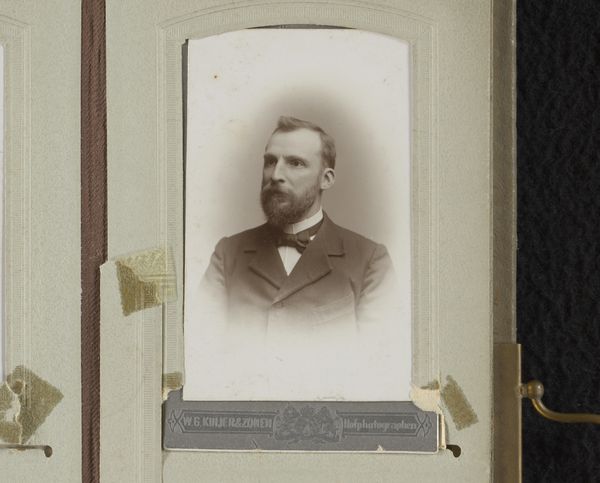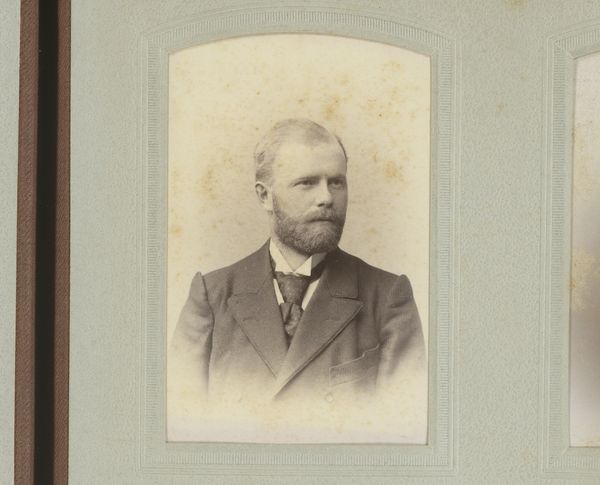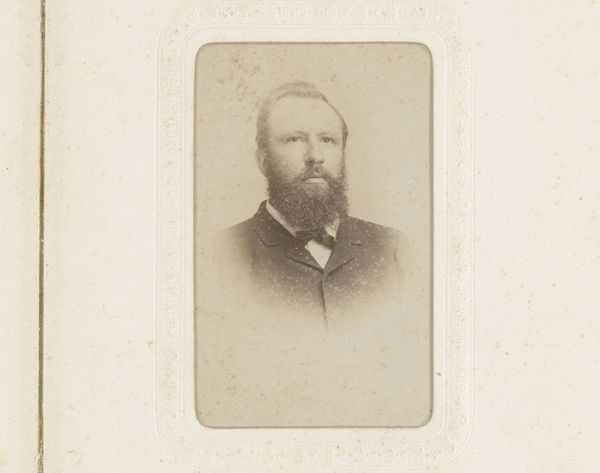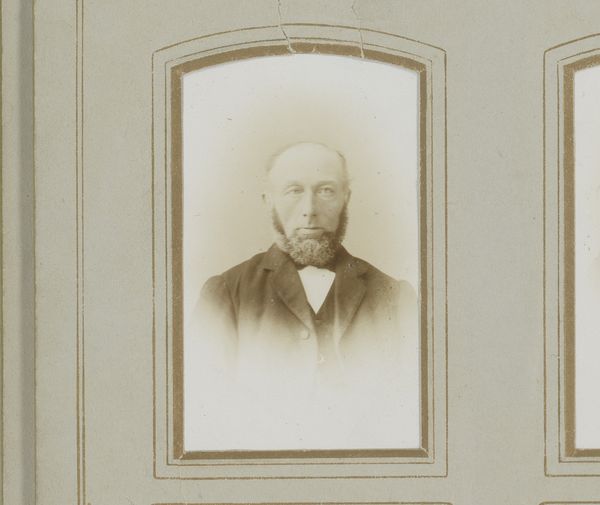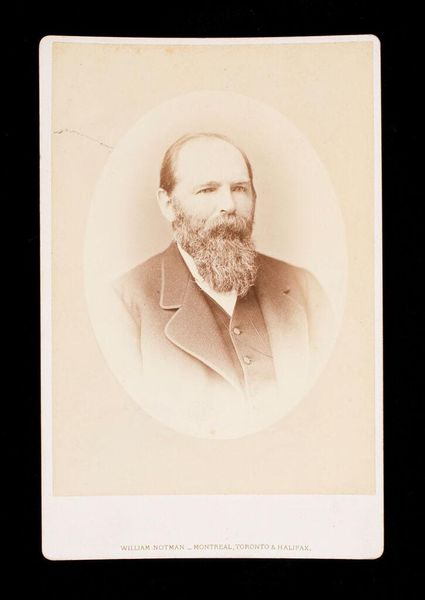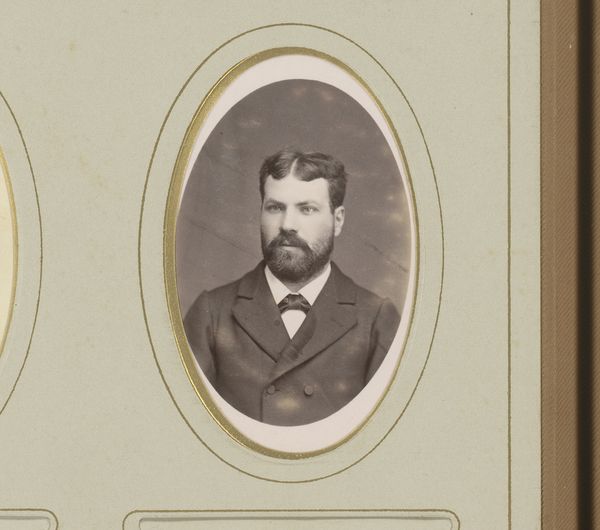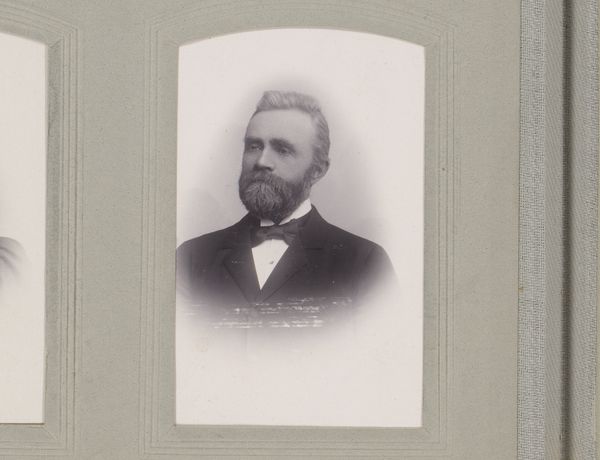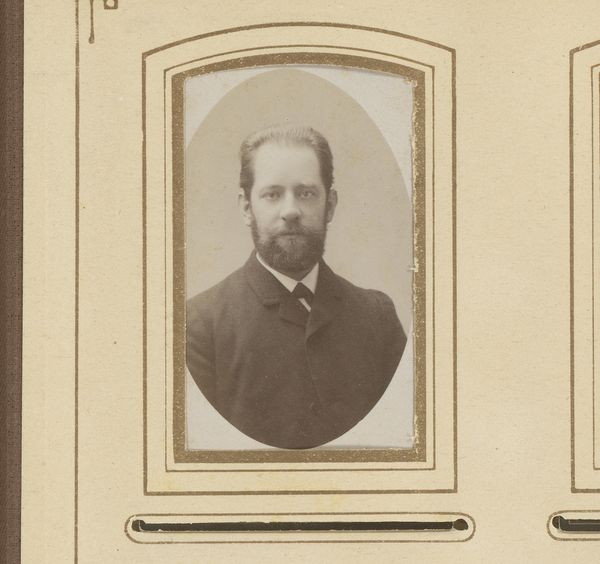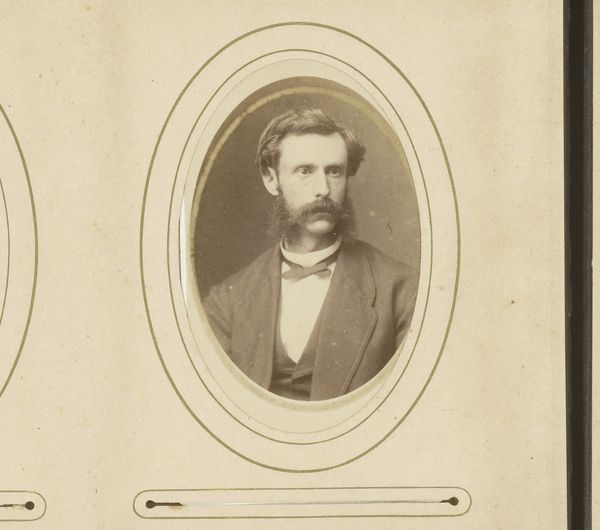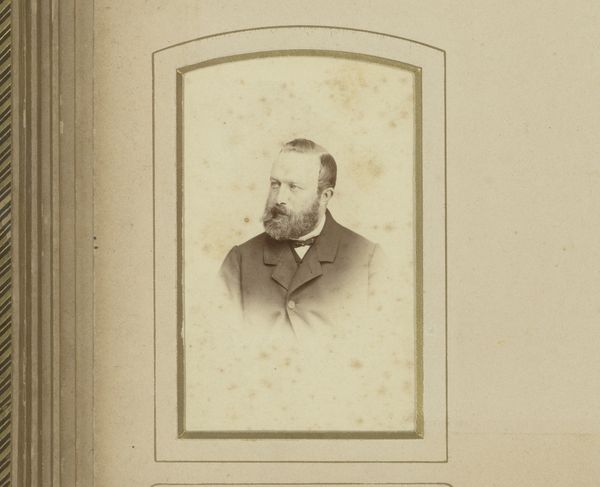
Dimensions: height 83 mm, width 51 mm
Copyright: Rijks Museum: Open Domain
Curator: This is a gelatin silver print titled "Portret van een man met snor, baard en vlinderstrik"—or, "Portrait of a man with mustache, beard and bow tie." The photographer is Carl Sandels, and the photograph dates to between 1895 and 1920. Editor: The sepia tones give this image a real sense of history, almost like looking back in time at a bygone era. The sharp details of the man’s features contrasts with a soft vignette which almost appears to be isolating him. Curator: Let's observe how the light interacts with the man's features. Notice the deep shadows cast by his beard, creating strong tonal contrasts that lend a certain weight and seriousness to his expression. His direct gaze engages the viewer. Editor: Absolutely. There's a formality here—the neatly trimmed beard, the precisely tied bow tie, the formal jacket. I'm also interested in how we read images like this from the turn of the century. It prompts a conversation about the constructions of masculinity. How did men want to be seen at this point in history? How complicit was photography in perpetuating specific standards of bourgeois masculinity? Curator: A relevant point to be sure. Note how the composition centres the subject. Symmetry here creates balance and reinforces that sense of respectability, that formality you mention. The slightly soft focus around the edges further concentrates our attention on the face. Editor: I agree; all the structural components contribute to the sense of composed dignity. As well, given the date, I wonder how issues like race, class and national identity played a role in the history and access to photography. What were the material conditions under which these images were produced? Curator: Food for thought. Though this may seem a very straightforward portrait, a certain elegance exists. Sandels manipulates photographic materials with a degree of care, allowing it a place within the aesthetic debates of the time. Editor: Ultimately, viewing an image like this invites us to engage critically with the narratives of the past while recognizing the potential for representation. We get to reflect on both then and now.
Comments
No comments
Be the first to comment and join the conversation on the ultimate creative platform.
